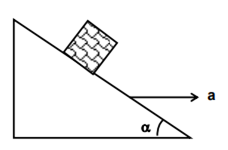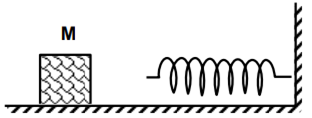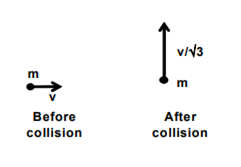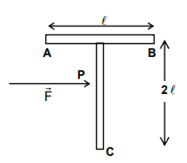 Multiple Choice Questions
Multiple Choice QuestionsA block is kept on a frictionless inclined surface with angle of inclination α. The incline is given an acceleration a to keep the block stationary. Then a is equal to
g/tanα
g cosecα
g
g
A spherical ball of mass 20 kg is stationary at the top of a hill of height 100 m. It rolls down a smooth surface to the ground, then climbs up another hill of height 30 m and finally rolls down to a horizontal base at a height of 20 m above the ground. The velocity attained by the ball is
40 m/s
20 m/s
10 m/s
10 m/s
A body A of mass M while falling vertically downwards under gravity breaks into two parts; a body B of mass 1/3 M and a body C of mass 2/3 M. The centre of mass of bodies B and C taken together shifts compared to that of body A towards
depends on height of breaking
does not shift
body C
body C
A particle of mass 0.3 kg is subjected to a force F=−kx with k=15 N/m. What will be its initial acceleration if it is released from a point 20 cm away from the origin?
3 m/s2
15 m/s2
5 m/s2
5 m/s2
The block of mass M moving on the frictionless horizontal surface collides with a spring of spring constant K and compresses it by length L. The maximum momentum of the block after collision is

KL2/2M
zero
zero
A mass ‘m’ moves with a velocity v and collides inelastically with another identical mass. After collision, the 1st mass moves with velocity v/√3 in a direction perpendicular to the initial direction of motion. Find the speed of the 2nd mass after collision
v
√3 v
2v/√3
2v/√3
Average density of the earth
does not depend on g
is a complex function of g
is directly proportional to g
is directly proportional to g
A body of mass m is accelerated uniformly from rest to a speed v in a time T. The instantaneous power delivered to the body as a function time is given by




Consider a car moving on a straight road with a speed of 100 m/s. The distance at which car can be stopped is [µ =k 0.5]
800 m
1000 m
600 m
600 m
A ‘T’ shaped object with dimensions shown in the figure, is lying on a smooth floor. A force F is applied at the point P parallel to AB, such that the object has only the translational motion without rotation. Find the location of P with respect to C
2
3
4
4
C.
4
The point P must be the centre of mass of the T-shaped object since the force F does not produce any rotational motion of the object. So, we have to find the distance of the centre of mass from the point C.
The horizontal part of the T-shaped object has length L. If the mass of the horizontal portion is ‘m’, the mass of the vertical portion of the T- shaped object is 2m since its length is 2L. For finding the centre of mass of the T shaped object, it is enough to consider two point masses m and 2m located respectively at the midpoints of the horizontal and vertical portions of the T.
Therefore, the T-shaped object reduces to two point masses m and 2m at distances 2L and L respectively from the point C. The distance ‘r’ of the centre of mass of the system from the point C is given by
r = (m1r1 + m2r2)/(m1 + m2) = (m×2L + 2m×L)/(m + 2m) = 4L/3
[ Note that we have used the equation, r = (m1r1 + m2r2)/(m1 + m2) for the position vector r of the centre of mass in terms of the position vectors r1 and r2 of the point masses m1 and m2. We could use the simple equation involving the distances from C since the points are collinear].
